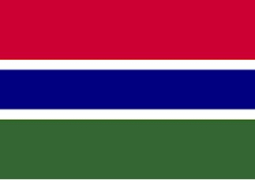However, the overall desire to migrate remains very strong, highlighting the need for safe legal pathways.
Expanding youth populations, lack of economic opportunity, political instability, and conflict have all contributed to the growth of irregular migration from Africa to Europe over the last decade.
Almost a million sub-Saharan African migrants applied for asylum in Europe between 2010 and 2017.
But legal pathways for migration are limited – and so the most common way for young people to migrate from West Africa to Europe is through what is referred to as the ‘backway’.
This describes an overland journey through West Africa, across the Sahara desert, and into Libya, from where youth attempt to catch boats to Italy and other European destinations, with each stage involving multiple risks.
Images of young African men on crowded rubber boats put the phenomenon under the political spotlight, as well as raising attention to the humanitarian costs to the migrants who face risks of abuse and loss of life on these journeys.
In response, the European Commission set up a €4.8 billion Emergency Trust Fund for Africa to support migration- and displacement-related programming designed to reduce the incentives for people to migrate. But migration experts note that past experience suggests the capacity of development assistance to deter migration is small at best.
One reason for this is that the income gaps between countries are so large.
For example, income per capita in 2019 was $778 in the Gambia, and 42 times as high in Italy at $33,228.
Faced with these vast differences, it comes to no surprise that 56% of the 3,700 young Gambian people whom we interviewed in 2019 said that they would migrate to Europe if they had the opportunity.
The Gambia has a long history of migration, in part due to its small size and geographical location on historic trade routes.
Migration to Europe and asylum-seeking increased following a coup in 1994, leading to the Gambia becoming the African country with the highest incidence of irregular migration relative to its total population, according to 2017.
The remittances sent by this diaspora constituted 20% of Gambian GDP, helping to support many families.
Despite this reduction in intentions to migrate, the desire to migrate to Europe remains incredibly high among these young men, with 65% saying they are likely or very likely to try to migrate, and 58% saying that they would consider the backway.





